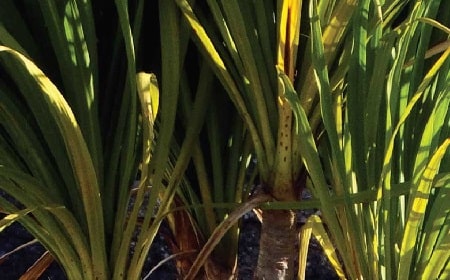Dracaena Marginata Characteristics, Those who want to grow the plant do research on Dracaena Marginata characteristics. You can see the characteristics of this plant in the following articles: It is very easy to care for. It is hardy. It continues to grow unless it is very thirsty. It adapts, including to insufficient daylight. How to Prune Dracaena Marginata? Most plants have a pruning time. For Dracaena Marginata pruning, you should pay attention to the following list: The end of winter and the beginning of spring are suitable for pruning. The rotten leaves are cut off using a cutting tool. For sprouting from the bottom, the trunk needs to be cut at the base.
Dracaena is a diverse genus of plants with various species that are commonly used as indoor and outdoor ornamental plants. Here are some fun facts about Dracaena:
- Variety: The Dracaena genus includes a wide variety of species, each with its unique characteristics. Some common species include Dracaena marginata, Dracaena fragrans, Dracaena sanderiana (Lucky Bamboo), and Dracaena reflexa.
- Ancient Symbolism: The name “Dracaena” is derived from the Greek word “drakaina,” which means “female dragon.” This name might be attributed to the red resin that resembles dragon’s blood in some species.
- Air Purification: Many Dracaena species are known for their air-purifying qualities. They can help remove indoor pollutants like formaldehyde, benzene, and trichloroethylene.
- Lucky Bamboo Connection: Dracaena sanderiana, commonly known as Lucky Bamboo, is not a true bamboo but belongs to the Dracaena genus. It is often associated with good luck and positive energy in Feng Shui.
- Adaptability: Dracaenas are known for their adaptability to a variety of indoor conditions. They can tolerate lower light levels, making them suitable for office spaces and homes with limited sunlight.
- Diversity in Appearance: Dracaena species exhibit a wide range of leaf shapes, colors, and sizes. Some have narrow, arching leaves, while others have broader, sword-shaped leaves. Leaf colors can range from green to variegated patterns, with some species featuring red or burgundy edges.
- Low Maintenance: Dracaenas are generally low-maintenance plants, making them popular choices for both beginner and experienced plant enthusiasts. They can thrive with minimal care, including occasional watering and moderate light.
- Outdoor Varieties: While many Dracaena species are cultivated as houseplants, some are also grown outdoors in tropical and subtropical regions. They contribute to landscaping with their tall, attractive foliage.
- Dragon’s Blood Resin: Some Dracaena species, particularly Dracaena draco, produce a red resin called “dragon’s blood.” This resin has been historically used for various purposes, including medicinal and ritualistic applications.
- Symbolism: In some cultures, Dracaena plants are associated with symbolism, representing longevity, resilience, and good fortune.

Remember that individual species within the Dracaena genus can have unique features and care requirements, so it’s always a good idea to know the specific species you are working with.
What is the description of Dracaena plant?
Dracaena is a genus of tropical plants known for their attractive foliage and ease of care. While there are various species within the Dracaena genus, I’ll provide a general description that captures some common characteristics:
Appearance:
- Leaves: Dracaena plants typically have long, slender leaves that may be lance-shaped, sword-shaped, or have broader, arching forms, depending on the species. Leaf colors can range from various shades of green to variegated patterns, and some species may have red or burgundy margins.
- Trunk/Stem: The stem or trunk of Dracaena plants can be single or branched, and it may have a woody appearance. In some species, the stem is quite prominent, while in others, it may be less visible, especially when the plant is young.
- Size: Dracaenas vary widely in size. Some are compact and suitable for tabletops, while others can grow quite tall and are often used as floor plants.
Cultural Characteristics:
- Light Requirements: Dracaenas generally prefer bright, indirect light. While they can tolerate lower light conditions, their growth may slow, and the vibrancy of their foliage might diminish in low light.
- Watering: Dracaenas are sensitive to overwatering, so it’s important to let the top inch or two of the soil dry out before watering. They prefer slightly moist but well-draining soil.
- Temperature and Humidity: They thrive in average room temperatures and can tolerate normal household humidity levels. Protect them from drafts and cold temperatures.
- Fertilization: Feed Dracaenas with a balanced liquid fertilizer every 4-6 weeks during the growing season (spring and summer). Reduce or eliminate fertilization in the fall and winter when the plant’s growth slows down.
Common Dracaena Species:
- Dracaena marginata (Madagascar Dragon Tree): Known for its thin, arching leaves with red or burgundy margins.
- Dracaena fragrans (Corn Plant or Massangeana): Features broad, sword-shaped leaves arranged in a rosette. Variegated varieties are popular.
- Dracaena deremensis (Janet Craig): Has dark green, glossy leaves and is a popular choice for indoor settings.
- Dracaena sanderiana (Lucky Bamboo): Often used in water or soil, it is not a true bamboo but is a Dracaena species.
Note: Dracaenas are generally easy to care for, adaptable, and can be suitable for indoor environments. Specific care requirements can vary based on the species, so it’s always beneficial to identify the exact type of Dracaena you have for more tailored care instructions.
